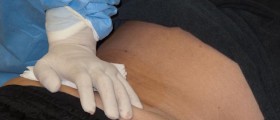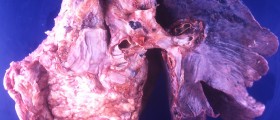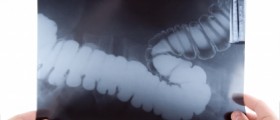
A sarcoma is a malignant tumor that affects the soft tissues in the body. The soft tissues are muscles, cartilage, nerves, fat and veins. There are a lot of different types of sarcomas but generally it is a rare condition.
In the early stage, sarcoma does not have any symptoms. In later stages symptoms such as swellings, pain when touching or problems with intestines or stomach if the cancer affected gastrointestinal tract may occur. Although the sarcoma can appear on any part of the body, it affects the legs, feet, arms and hands the most. It can also affect the abdomen and chest and in rare cases the neck and head.
The sarcoma is named after the tissue it has affected. Some of the sarcomas are liposarcoma which affects fatty tissue, hemangiosarcoma which affects blood vessels, neurofibrosarcoma which affect the nerves and dermatofibrosarcoma which appears under the skin.
The cause of the soft tissue sarcomas is unknown but in some cases it can be hereditary. Rarely, the sarcoma may occur as a consequence of radiation therapy. If the patient had radiation therapy because of some other cancer, the sarcoma can be a side effect of such therapy. If you have been exposed to high doses of dioxin, vinyl chloride or pesticides which have phenoxyacetic acid inside, you may be at risk of getting the soft tissue sarcoma.
In order to diagnose the condition, the doctor will have to perform a biopsy to determine if you are dealing with cancer. Depending on the location in the body, the sample for biopsy can be taken with a needle or the doctor will perform a surgical procedure. The doctor will determine the stage of the sarcoma and according to that he/she will decide on the proper treatment. There are four stages of the sarcoma. They are established according to whether the sarcoma has spread to the lymph nodes or any other part of the body, whether the tumor advances rapidly and the size of the sarcoma
The treatment for sarcomas depends on various factors such as the size, location and stage of the sarcoma. In most cases, the sarcoma is surgically removed together with the surrounding tissue. In extreme cases amputation of an arm or leg must be performed if the sarcoma spread to nerves, veins and muscles of the leg or arm. Another treatment can be radiation. Such therapy is usually performed before the surgery in order to shrink the sarcoma before it is removed. A further option is chemotherapy which is using medications to destroy cancerous cells.

















Your thoughts on this
Loading...